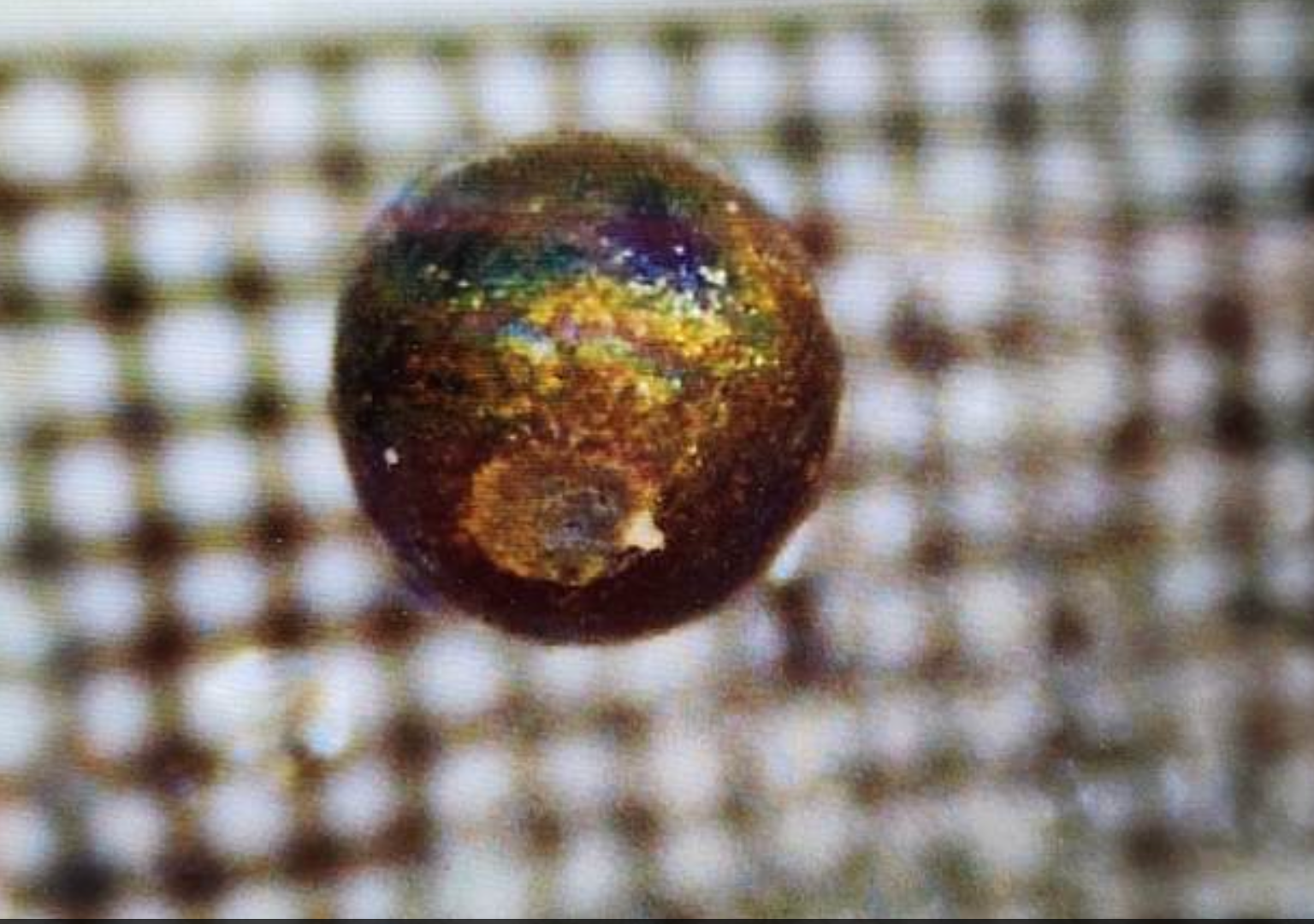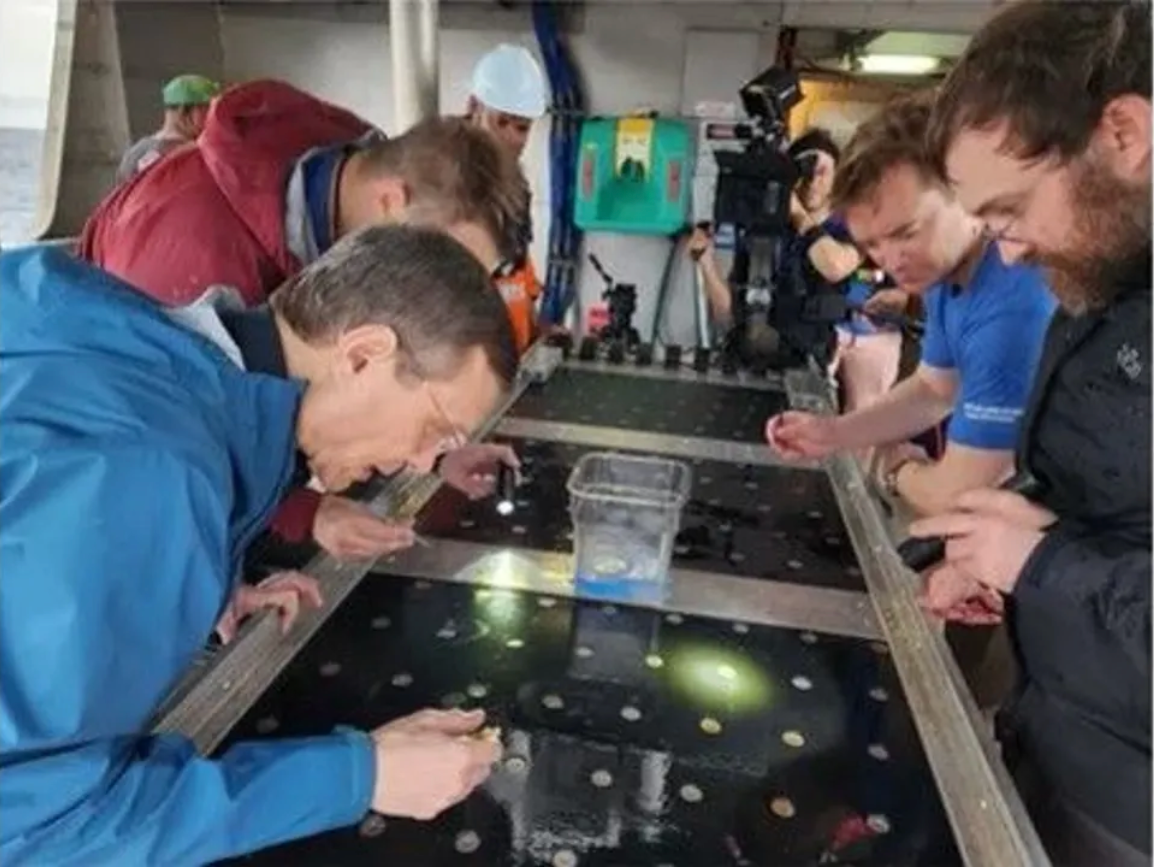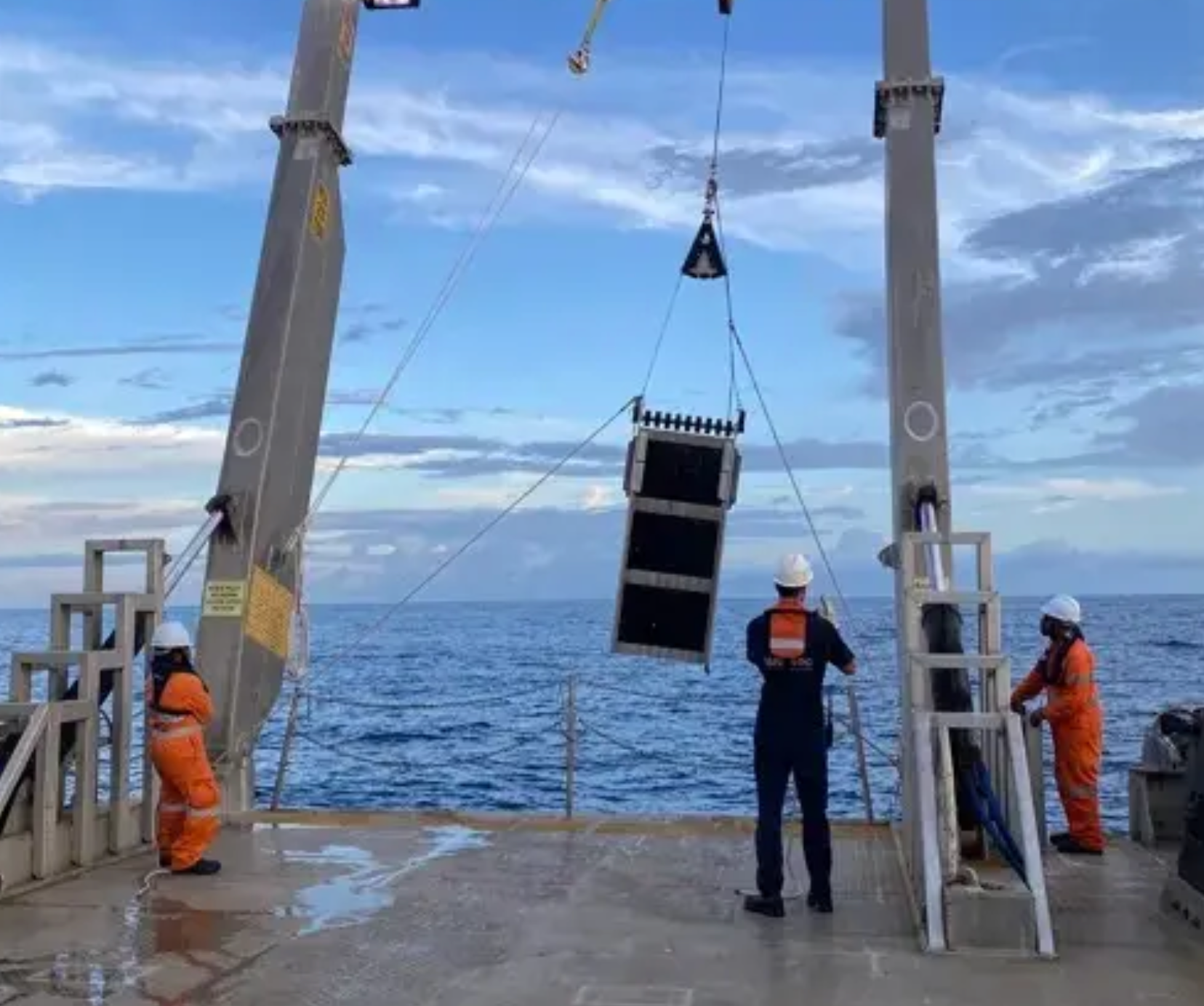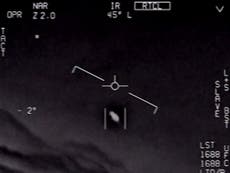BY MARIK VON RENNENKAMPFF,
OPINION CONTRIBUTOR
THE HILL
- 06/27/23
Asked June 26 about allegations of secret UFO retrieval and reverse-engineering programs, Senate Intelligence Committee Vice Chairman Marco Rubio (R-Fla.) made several stunning statements.
In an exclusive interview, Rubio told NewsNation Washington correspondent Joe Khalil that multiple individuals with “very high clearances and high positions within our government” “have come forward to share” “first-hand” UFO-related claims “beyond the realm of what [the Senate Intelligence Committee] has ever dealt with.”
Rubio’s comments provide context for a bipartisan provision adopted unanimously by the Senate Intelligence Committee, which would immediately halt funding for any secret government or contractor efforts to retrieve and reverse-engineer craft of “non-earth” or “exotic” origin.
This extraordinary language added to the Senate version of the Intelligence authorization bill mirrors and adds significant credibility to a whistleblower’s recent, stunning allegations that a clandestine, decades-long effort to recover, analyze and exploit objects of “non-human” origin has been operating illegally without congressional oversight.
Additionally, the bill instructs individuals with knowledge of such activities to disclose all relevant information and grants legal immunity if the information is reported appropriately within a defined timeframe. Moreover, nearly 20 pages of the legislation appear to directly address recent events by enhancing a raft of legal protections for whistleblowers while also permitting such individuals to contact Congress directly.
Researcher and congressional expert Douglas Johnson first reported on and analyzed the remarkable bill language, which, if it passes the House, could become law this calendar year.
Beyond the Senate Intelligence Committee, the powerful investigative body that oversees the nation’s intelligence agencies found the aforementioned whistleblower’s allegations — that secret UFO-related programs are illegally withheld from Congress — to be “credible and urgent.”
Moreover, according to two reports, multiple military, intelligence and contractor officials corroborated claims that the U.S. government or private companies possess multiple craft of possible “non-human” origin.
Importantly, this intelligence bill is not the first instance of Congress addressing the possible existence of surreptitious UFO retrieval and reverse engineering programs.
The 2023 National Defense Authorization Act, signed into law by President Joe Biden last December, established robust whistleblower protections for individuals with knowledge of secret UFO programs engaged in “material retrieval, material analysis, reverse engineering [and] research and development.”
But the Senate Intelligence Committee’s legislation goes significantly further than previous laws. If enacted as drafted, the legislation would immediately halt funding for any secret, unreported programs that engage in “analyzing” retrieved UFOs “for the purpose of determining properties, material composition, method of manufacture, origin, characteristics, usage and application, performance, operational modalities, or reverse engineering of such craft or component technology.”
At the same time, the legislation would cease funding for any personnel engaged in “capturing, recovering, and securing [UFOs] or pieces and components of such craft.”
Funding would also be cut for “the development of propulsion technology, or aerospace craft that uses propulsion technology, systems, or subsystems, that is based on or derived from or inspired by inspection, analysis, or reverse engineering of recovered [UFOs] or materials.”
Perhaps more importantly, the bill language prohibits legal prosecution of individuals with knowledge of surreptitious retrieval and reverse engineering of “non-human” craft. To avoid legal jeopardy, such individuals would have two months after passage of the legislation to inform the director of the Pentagon’s new UFO analysis office of the existence of relevant UFO-related information.
These individuals would then have six months to turn over “all such material and information,” as well as “a comprehensive list of all non-earth origin or exotic [UFO] material.”
Importantly, the Senate Intelligence Committee’s legislation contains a “sense of Congress” provision. Such resolutions typically convey a particular message from either the House or the Senate or, as in this case, from Congress as a whole.
The “sense of Congress” is that any illegally hidden craft of “non-earth” or “exotic” origin must be brought out of the shadows for broader scientific and industrial analysis. In particular, the goal of the legislation is to “avoid technology stovepipes” — a reference to the non-sharing of information due to excessive secrecy and compartmentalization — and to integrate any recovered “exotic technology” into the nation’s broader “industrial base.”
The “sense of Congress” provision aligns closely with concerns expressed by multiple officials that extraordinary secrecy prevents the robust scientific analysis required to make sense of the advanced, “non-human” craft allegedly retrieved in recent decades.
Of note, there are indications that at least one law enforcement entity is engaged in a sweeping investigation of the U.S. government’s handling of UFOs.
Freedom of Information Act (FOIA) requests are one of the few pathways through which private citizens can obtain government information on UFOs. Official documents and other data released under FOIA are frequently redacted to prevent the release of classified information. Importantly, each redaction must be grounded in a legal justification for why the relevant information is withheld.
Recently, the U.S. government denied in full five FOIA requests encompassing a broad range of UFO-related topics. In a striking departure from previous practice, the government denied the requests on the grounds that release of the information may interfere with “enforcement proceedings” and “law enforcement investigations or prosecutions.”US-India relations: A test case for the Sullivan DoctrineDon’t take away critical surgery options from breast cancer patients
The application of such novel justifications for withholding government UFO information is circumstantial evidence that a law enforcement entity, such as the Department of Defense Office of Inspector General, is engaged in a broad, and possibly criminal, investigation of the U.S. government’s involvement with UFOs.
After all, what government oversight body, explicitly charged with preventing unlawful activities, would fail to initiate a sweeping investigation of extraordinary and seemingly credible allegations of illegality?
Marik von Rennenkampff served as an analyst with the U.S. Department of State’s Bureau of International Security and Nonproliferation, as well as an Obama administration appointee at the U.S. Department of Defense.
Asked June 26 about allegations of secret UFO retrieval and reverse-engineering programs, Senate Intelligence Committee Vice Chairman Marco Rubio (R-Fla.) made several stunning statements.
In an exclusive interview, Rubio told NewsNation Washington correspondent Joe Khalil that multiple individuals with “very high clearances and high positions within our government” “have come forward to share” “first-hand” UFO-related claims “beyond the realm of what [the Senate Intelligence Committee] has ever dealt with.”
Rubio’s comments provide context for a bipartisan provision adopted unanimously by the Senate Intelligence Committee, which would immediately halt funding for any secret government or contractor efforts to retrieve and reverse-engineer craft of “non-earth” or “exotic” origin.
This extraordinary language added to the Senate version of the Intelligence authorization bill mirrors and adds significant credibility to a whistleblower’s recent, stunning allegations that a clandestine, decades-long effort to recover, analyze and exploit objects of “non-human” origin has been operating illegally without congressional oversight.
Additionally, the bill instructs individuals with knowledge of such activities to disclose all relevant information and grants legal immunity if the information is reported appropriately within a defined timeframe. Moreover, nearly 20 pages of the legislation appear to directly address recent events by enhancing a raft of legal protections for whistleblowers while also permitting such individuals to contact Congress directly.
Researcher and congressional expert Douglas Johnson first reported on and analyzed the remarkable bill language, which, if it passes the House, could become law this calendar year.
Beyond the Senate Intelligence Committee, the powerful investigative body that oversees the nation’s intelligence agencies found the aforementioned whistleblower’s allegations — that secret UFO-related programs are illegally withheld from Congress — to be “credible and urgent.”
Moreover, according to two reports, multiple military, intelligence and contractor officials corroborated claims that the U.S. government or private companies possess multiple craft of possible “non-human” origin.
Importantly, this intelligence bill is not the first instance of Congress addressing the possible existence of surreptitious UFO retrieval and reverse engineering programs.
The 2023 National Defense Authorization Act, signed into law by President Joe Biden last December, established robust whistleblower protections for individuals with knowledge of secret UFO programs engaged in “material retrieval, material analysis, reverse engineering [and] research and development.”
But the Senate Intelligence Committee’s legislation goes significantly further than previous laws. If enacted as drafted, the legislation would immediately halt funding for any secret, unreported programs that engage in “analyzing” retrieved UFOs “for the purpose of determining properties, material composition, method of manufacture, origin, characteristics, usage and application, performance, operational modalities, or reverse engineering of such craft or component technology.”
At the same time, the legislation would cease funding for any personnel engaged in “capturing, recovering, and securing [UFOs] or pieces and components of such craft.”
Funding would also be cut for “the development of propulsion technology, or aerospace craft that uses propulsion technology, systems, or subsystems, that is based on or derived from or inspired by inspection, analysis, or reverse engineering of recovered [UFOs] or materials.”
Perhaps more importantly, the bill language prohibits legal prosecution of individuals with knowledge of surreptitious retrieval and reverse engineering of “non-human” craft. To avoid legal jeopardy, such individuals would have two months after passage of the legislation to inform the director of the Pentagon’s new UFO analysis office of the existence of relevant UFO-related information.
These individuals would then have six months to turn over “all such material and information,” as well as “a comprehensive list of all non-earth origin or exotic [UFO] material.”
Importantly, the Senate Intelligence Committee’s legislation contains a “sense of Congress” provision. Such resolutions typically convey a particular message from either the House or the Senate or, as in this case, from Congress as a whole.
The “sense of Congress” is that any illegally hidden craft of “non-earth” or “exotic” origin must be brought out of the shadows for broader scientific and industrial analysis. In particular, the goal of the legislation is to “avoid technology stovepipes” — a reference to the non-sharing of information due to excessive secrecy and compartmentalization — and to integrate any recovered “exotic technology” into the nation’s broader “industrial base.”
The “sense of Congress” provision aligns closely with concerns expressed by multiple officials that extraordinary secrecy prevents the robust scientific analysis required to make sense of the advanced, “non-human” craft allegedly retrieved in recent decades.
Of note, there are indications that at least one law enforcement entity is engaged in a sweeping investigation of the U.S. government’s handling of UFOs.
Freedom of Information Act (FOIA) requests are one of the few pathways through which private citizens can obtain government information on UFOs. Official documents and other data released under FOIA are frequently redacted to prevent the release of classified information. Importantly, each redaction must be grounded in a legal justification for why the relevant information is withheld.
Recently, the U.S. government denied in full five FOIA requests encompassing a broad range of UFO-related topics. In a striking departure from previous practice, the government denied the requests on the grounds that release of the information may interfere with “enforcement proceedings” and “law enforcement investigations or prosecutions.”US-India relations: A test case for the Sullivan DoctrineDon’t take away critical surgery options from breast cancer patients
The application of such novel justifications for withholding government UFO information is circumstantial evidence that a law enforcement entity, such as the Department of Defense Office of Inspector General, is engaged in a broad, and possibly criminal, investigation of the U.S. government’s involvement with UFOs.
After all, what government oversight body, explicitly charged with preventing unlawful activities, would fail to initiate a sweeping investigation of extraordinary and seemingly credible allegations of illegality?
Marik von Rennenkampff served as an analyst with the U.S. Department of State’s Bureau of International Security and Nonproliferation, as well as an Obama administration appointee at the U.S. Department of Defense.
Why a Harvard professor thinks he may have found fragments of an alien spacecraft at the bottom of the Pacific
A daring deep sea search has found tiny pieces of a mysterious meteor that crashed to Earth in 2014. The ‘alien hunter of Harvard’ tells Bevan Hurley the discovery may be evidence of an advanced extraterrestrial civilization visiting Earth

Harvard professor Avi Loeb with a piece of magnetic debris dredged from the Pacific Ocean
(Avi Loeb / Medium)
After spending years studying the night skies for signs of extraterrestrial life, Harvard University astrophysicist Avi Loeb believes he has found proof of their existence at the bottom of the Pacific Ocean.
Professor Loeb has just completed a $1.5m expedition searching for signs of a mysterious meteor dubbed IM1 that crashed off the coast of Papua New Guinea in 2014 and is believed to have come from interstellar space.
The 61-year-old told The Independent he oversaw a team of deep-sea explorers who found 50 tiny spherules, or molten droplets, using a magnetic sled that was dropped from the expedition vessel the Silver Star 2km underneath the surface of the ocean.
He believes the tiny objects, about half a millimetre in size, are most likely made from a steel-titanium alloy that is much stronger than the iron found in regular meteors.
Further testing was now required, but Prof Loeb believes they either have interstellar origins, or have been made by an advanced extraterrestrial civilization.
Prof Loeb chaired Harvard’s astronomy department from 2011 to 2020 and now leads the university’s Galileo Project, which is establishing open-sourced observatories across the world to search for signs of UFOs and interstellar objects.
Recommended

A tiny spherule, recovered from the bottom of the Pacific Ocean, could be a fragment from an alien spacecraft, Harvard Professor Avi Loeb says
(Courtesy of Avi Loeb)
His ideas have set him at odds with much of the scientific community. But the unapologetic scientist dubbed the “alien hunter of Harvard” tells The Independent that his naysayers are “arrogant” to dismiss his findings.
The objects will now be taken back to Harvard for testing to confirm their make-up. But for Prof Loeb, the “miracle” discovery is further vindication that his unorthodox methods are bearing fruit.
‘An outlier’
His quest began in 2019, when IM1 caught the attention of his research team as they combed NASA’s open-source catalogue of meteors for irregular space rock detected around the Earth.
IM1 stood out for its high velocity — it travelled faster than 95 per cent of nearby stars — and the fact it had exploded much lower in the Earth’s atmosphere than most meteors.
“The object was tougher than all (272) other space rocks recorded in the same NASA catalogue, it was an outlier of material strength,” Prof Loeb told The Independent.
He and his Harvard colleague Amir Siraj calculated with 99.999 per cent confidence that IM1 had travelled to Earth from another star.
The pair initially had their paper rejected for publication in an academic journal, and were stymied from gaining access to key classified US Government data about IM1.
Then in April last year, the US Space Force wrote to NASA to say that the chief scientist of the US Space Operations Command had confirmed IM1’s velocity was “sufficiently accurate” to indicate it had come from interstellar space.
Using a combination of Department of Defense data and seismology readings, Prof Loeb was able to calculate a rough area where debris from IM1 had fallen.
From there, he was able to pinpoint the meteor’s most likely path as it exploded and shed its payload.
With $1.5m in funding from US entrepreneur Charles Hoskinson, the founder of blockchain company Cardano, Prof Loeb assembled what he describes as the best team of ocean explorers in the world.
This included Rob McCallum, the founder of EYOS Expeditions and a former OceanGate Expeditions consultant who had tried to raise the alarm about the doomed Titan submersible with its CEO Stockton Rush in 2018.
In mid-June, Prof Loeb set out from his home in Connecticut bound for Papua New Guinea.
Days earlier, former US Air Force intelligence officer David Grusch went public with claims that a Department of Defense UFO Task Force was withholding information about a secretive UFO retrieval program and is in possession of “non-human” spacecraft.
“It’s easier to seek extraterrestrial facts on the Pacific Ocean floor than get them from the government,” Prof Loeb wrote in an expedition journal on Medium at the time.
He noted that opinion among the general public towards the possibility of alien life was shifting.
An ‘interstellar expedition’
On 14 June, the Silver Star expedition vessel set out for the meteor’s estimated landing zone in the Pacific Ocean about 84km north of Manus Island, Papua New Guinea.
“There are about 850 spoken languages in Papua, the most linguistically diverse place on Earth,” Prof Loeb wrote on Medium. “Yet, if the expedition recovers a gadget with an extraterrestrial inscription, we will add a new language to this site.”
After reaching the site, the crew dropped a one-metre wide magnetic sled into the ocean that was towed behind the ship with a long cable.
The crew began by collecting control samples of volcanic ash from the ocean floor outside of IM1’s estimated path.
About one week into the expedition, a breakthrough came when the sled picked up the first “spherical metallic marbles”.
The spherules are formed as meteors and asteroids explode, and have been found at impact sites across the globe. The “tiny metallic pearls” were so small they were difficult to pick up with tweezers, Prof Loeb said.

Loeb and the research team on the Silver Star examine ‘spherules’ recovered from the bottom of the Pacific Ocean
(Courtesy of Avi Loeb)
Writing on Medium, Prof Loeb said at first the material looked like shards of corroded iron.
But when examined under fluorescent X-Ray, the research team determined they were most likely a steel and titanium alloy, also known as S5 or shock-resisting steel. The strength of S5 steel is well above that of iron meteorites, Prof Loeb wrote.
Under a microscope, they looked “beautiful”, Prof Loeb told The Independent. “One of them looked like Earth, many of them look like gold,” he said.
“My daughter asked if she can have one for a necklace. And I said that they were too small to thread through,” he said.
The objects will be taken to the Harvard College Observatory, where a team of researchers will analyse them for comparisons to other meteorite debris.
Rather than finding a needle in a haystack, Prof Loeb is convinced his “interstellar expedition” found tiny specks of an alien life form in the middle of the ocean.

A team of researchers towed a magnetic sled along the floor of the Pacific Ocean 2km underneath the surface
(Courtesy of Avi Loeb)
On their final day at sea, having collected 50 spherules from the first recognised interstellar meteor, Prof Loeb and the team cracked open bottles of champagne on the deck of the Silver Star.
“There is this new opportunity of looking for interstellar debris at the bottom of the ocean,” Prof Loeb told The Independent.
“And the ocean is sort of like a museum. If it fell in the Sahara Desert, it would have been covered with sand by now. Those tiny droplets fell on the ocean floor, waited for nine and a half years, until our magnet attracted them. This entire story is just amazing.”
For a researcher who has has written more than 1,000 theoretical research papers, finding tiny objects at the bottom of the ocean had been an exhilarating experience.
“The past two weeks were the most exciting weeks in my scientific career,” he told The Independent.
Prof Loeb’s next book, Interstellar, is scheduled for publication in August 2023.
A daring deep sea search has found tiny pieces of a mysterious meteor that crashed to Earth in 2014. The ‘alien hunter of Harvard’ tells Bevan Hurley the discovery may be evidence of an advanced extraterrestrial civilization visiting Earth

Harvard professor Avi Loeb with a piece of magnetic debris dredged from the Pacific Ocean
(Avi Loeb / Medium)
After spending years studying the night skies for signs of extraterrestrial life, Harvard University astrophysicist Avi Loeb believes he has found proof of their existence at the bottom of the Pacific Ocean.
Professor Loeb has just completed a $1.5m expedition searching for signs of a mysterious meteor dubbed IM1 that crashed off the coast of Papua New Guinea in 2014 and is believed to have come from interstellar space.
The 61-year-old told The Independent he oversaw a team of deep-sea explorers who found 50 tiny spherules, or molten droplets, using a magnetic sled that was dropped from the expedition vessel the Silver Star 2km underneath the surface of the ocean.
He believes the tiny objects, about half a millimetre in size, are most likely made from a steel-titanium alloy that is much stronger than the iron found in regular meteors.
Further testing was now required, but Prof Loeb believes they either have interstellar origins, or have been made by an advanced extraterrestrial civilization.
Prof Loeb chaired Harvard’s astronomy department from 2011 to 2020 and now leads the university’s Galileo Project, which is establishing open-sourced observatories across the world to search for signs of UFOs and interstellar objects.
Recommended

Aliens, UFOs and government files: Meet the Harvard astronomer who says aliens have already visited us


Exotic spacecraft, extraterrestrial materials – and a cover-up: UFO whistleblower’s out-of-this-world claims


Everything we know so far about the Pentagon’s big UFO report
He has long courted controversy for his trenchant belief that aliens have visited Earth.
In his bestselling 2021 book Extraterrestrial: The First Sign of Intelligent Life Beyond Earth, Prof Loeb argued that ‘Oumuamua — a pancake-shaped space rock about the size of a football field which was visible to scientists for 11 days in 2017 — could only have been an interstellar technology built by aliens.
He has long courted controversy for his trenchant belief that aliens have visited Earth.
In his bestselling 2021 book Extraterrestrial: The First Sign of Intelligent Life Beyond Earth, Prof Loeb argued that ‘Oumuamua — a pancake-shaped space rock about the size of a football field which was visible to scientists for 11 days in 2017 — could only have been an interstellar technology built by aliens.

A tiny spherule, recovered from the bottom of the Pacific Ocean, could be a fragment from an alien spacecraft, Harvard Professor Avi Loeb says
(Courtesy of Avi Loeb)
His ideas have set him at odds with much of the scientific community. But the unapologetic scientist dubbed the “alien hunter of Harvard” tells The Independent that his naysayers are “arrogant” to dismiss his findings.
The objects will now be taken back to Harvard for testing to confirm their make-up. But for Prof Loeb, the “miracle” discovery is further vindication that his unorthodox methods are bearing fruit.
‘An outlier’
His quest began in 2019, when IM1 caught the attention of his research team as they combed NASA’s open-source catalogue of meteors for irregular space rock detected around the Earth.
IM1 stood out for its high velocity — it travelled faster than 95 per cent of nearby stars — and the fact it had exploded much lower in the Earth’s atmosphere than most meteors.
“The object was tougher than all (272) other space rocks recorded in the same NASA catalogue, it was an outlier of material strength,” Prof Loeb told The Independent.
He and his Harvard colleague Amir Siraj calculated with 99.999 per cent confidence that IM1 had travelled to Earth from another star.
The pair initially had their paper rejected for publication in an academic journal, and were stymied from gaining access to key classified US Government data about IM1.
Then in April last year, the US Space Force wrote to NASA to say that the chief scientist of the US Space Operations Command had confirmed IM1’s velocity was “sufficiently accurate” to indicate it had come from interstellar space.
Using a combination of Department of Defense data and seismology readings, Prof Loeb was able to calculate a rough area where debris from IM1 had fallen.
From there, he was able to pinpoint the meteor’s most likely path as it exploded and shed its payload.
With $1.5m in funding from US entrepreneur Charles Hoskinson, the founder of blockchain company Cardano, Prof Loeb assembled what he describes as the best team of ocean explorers in the world.
This included Rob McCallum, the founder of EYOS Expeditions and a former OceanGate Expeditions consultant who had tried to raise the alarm about the doomed Titan submersible with its CEO Stockton Rush in 2018.
In mid-June, Prof Loeb set out from his home in Connecticut bound for Papua New Guinea.
Days earlier, former US Air Force intelligence officer David Grusch went public with claims that a Department of Defense UFO Task Force was withholding information about a secretive UFO retrieval program and is in possession of “non-human” spacecraft.
“It’s easier to seek extraterrestrial facts on the Pacific Ocean floor than get them from the government,” Prof Loeb wrote in an expedition journal on Medium at the time.
He noted that opinion among the general public towards the possibility of alien life was shifting.
An ‘interstellar expedition’
On 14 June, the Silver Star expedition vessel set out for the meteor’s estimated landing zone in the Pacific Ocean about 84km north of Manus Island, Papua New Guinea.
“There are about 850 spoken languages in Papua, the most linguistically diverse place on Earth,” Prof Loeb wrote on Medium. “Yet, if the expedition recovers a gadget with an extraterrestrial inscription, we will add a new language to this site.”
After reaching the site, the crew dropped a one-metre wide magnetic sled into the ocean that was towed behind the ship with a long cable.
The crew began by collecting control samples of volcanic ash from the ocean floor outside of IM1’s estimated path.
About one week into the expedition, a breakthrough came when the sled picked up the first “spherical metallic marbles”.
The spherules are formed as meteors and asteroids explode, and have been found at impact sites across the globe. The “tiny metallic pearls” were so small they were difficult to pick up with tweezers, Prof Loeb said.

Loeb and the research team on the Silver Star examine ‘spherules’ recovered from the bottom of the Pacific Ocean
(Courtesy of Avi Loeb)
Writing on Medium, Prof Loeb said at first the material looked like shards of corroded iron.
But when examined under fluorescent X-Ray, the research team determined they were most likely a steel and titanium alloy, also known as S5 or shock-resisting steel. The strength of S5 steel is well above that of iron meteorites, Prof Loeb wrote.
Under a microscope, they looked “beautiful”, Prof Loeb told The Independent. “One of them looked like Earth, many of them look like gold,” he said.
“My daughter asked if she can have one for a necklace. And I said that they were too small to thread through,” he said.
The objects will be taken to the Harvard College Observatory, where a team of researchers will analyse them for comparisons to other meteorite debris.
Rather than finding a needle in a haystack, Prof Loeb is convinced his “interstellar expedition” found tiny specks of an alien life form in the middle of the ocean.

A team of researchers towed a magnetic sled along the floor of the Pacific Ocean 2km underneath the surface
(Courtesy of Avi Loeb)
On their final day at sea, having collected 50 spherules from the first recognised interstellar meteor, Prof Loeb and the team cracked open bottles of champagne on the deck of the Silver Star.
“There is this new opportunity of looking for interstellar debris at the bottom of the ocean,” Prof Loeb told The Independent.
“And the ocean is sort of like a museum. If it fell in the Sahara Desert, it would have been covered with sand by now. Those tiny droplets fell on the ocean floor, waited for nine and a half years, until our magnet attracted them. This entire story is just amazing.”
For a researcher who has has written more than 1,000 theoretical research papers, finding tiny objects at the bottom of the ocean had been an exhilarating experience.
“The past two weeks were the most exciting weeks in my scientific career,” he told The Independent.
Prof Loeb’s next book, Interstellar, is scheduled for publication in August 2023.

No comments:
Post a Comment